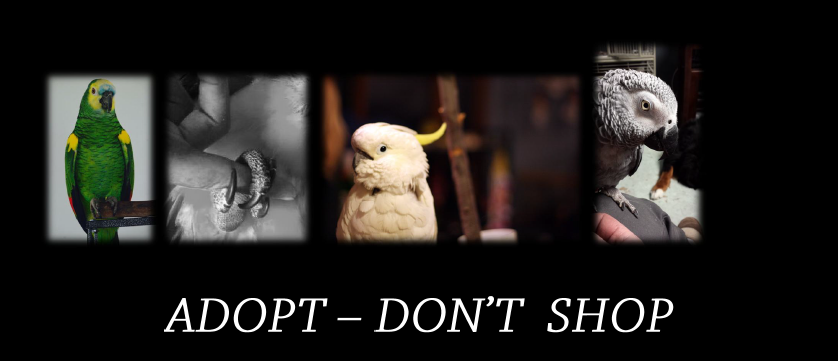What a healthy bird looks like
What can you tell by just looking at your bird?
Healthy birds are primarily the result of a healthy diet. The ideal pet bird is beautiful and brightly colored with sleek-looking feathers. Healthy birds like to sing, play, talk, and be active.
How To Recognize a Healthy Bird
Healthy, properly fed birds will exhibit certain features.
- The bird has a proper ratio of muscle, bone and fat.
- The beak is smooth and shiny without signs of peeling.
- The nares (nostrils) are clean and free of accumulations.
- The bird stands erect and alert on the perch.
- The respiration is smooth and even with no sounds of wheezing.
- The droppings are moist, the urine is clear and the urates are white.
- The feathers fit together like a garment – no bald spots, no picked feathers and no tattered, broken or abnormally colored feathers.
- The feet grip the perch strongly and evenly. The bottoms of the feet show a definite pattern – they are not smooth; nor do they show pressure points.
- The nails are the proper length.
- The skin on the legs and face is glistening, smooth and soft with no signs of flaking.
- There is no sign of swelling or bleeding on the body.
- The bird is calm and does not bite, scream or behave in an aggressive manner.
Malnutrition involves all of the systems of the body and is seen as: abnormalities in the body weight and shape; unusual appearances of feathers, nails, beaks and skin; undesirable behavior; and disturbances in all the body’s systems. Nutritional deficiencies appear to accelerate the aging process of birds, primarily through the loss of moisture and tissue elasticity.
Often, the signs of malnutrition in pet birds go completely overlooked by the owner simply because they are not recognized as such.
The value of a proper diet over the life of the bird is monumental. Birds fed a poor diet will become malnourished, which will start a chain of events leading to a decline in the bird’s overall health. The digestive system suffers first. The bacterial population of the digestive tract becomes unbalanced.
Once this has occurred, opportunistic pathogens find it easier to invade, and gram-negative rods and yeast counts increase. This opens the door for bacterial infections and other ailments related to the immune system.
Over time every part of the body will reflect the condition of the bird’s health. If the bird reaches the latter stages of malnutrition, damage to the internal organs may be so severe that it is too late to save the bird. All of this can easily be avoided if you choose to commit to the health of your bird by feeding a high quality, nutritional diet and maintaining an ongoing relationship with an avian veterinarian.
Any change in your bird’s eating habits, behavior or personality could be due to illness; it is important to discuss these changes with your veterinarian. Your bird’s health may depend on it.



